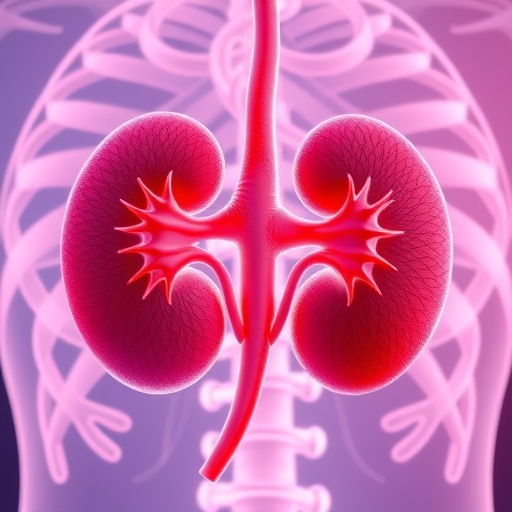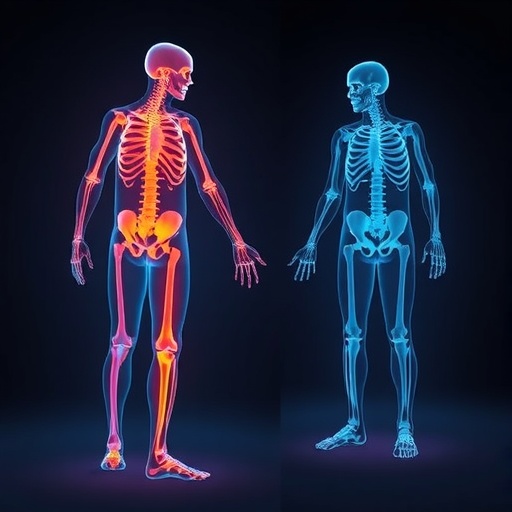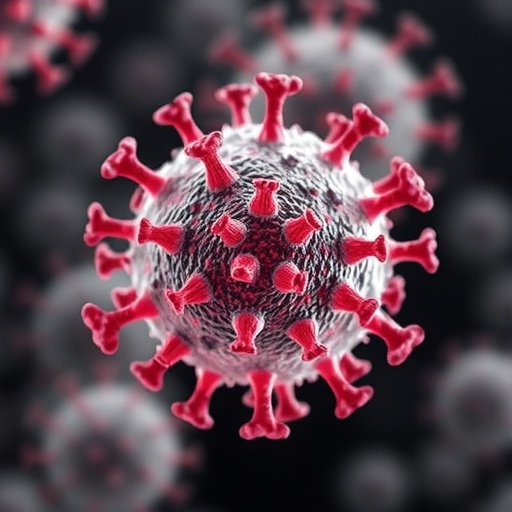In the intricate world of organ transplantation, kidney allografts stand as vital lifelines for patients grappling with end-stage renal disease. Yet, the longevity and success of these transplanted organs remain perpetually threatened by the immune system’s relentless vigilance, particularly through antibody-mediated rejection (AMR). A groundbreaking study published recently in Nature Communications unveils fresh insights into the molecular underpinnings that dictate the fate of kidney transplants, highlighting the pivotal roles played by HLA evolutionary divergence and donor-recipient molecular mismatches. This research not only propels our understanding of transplant immunology to unprecedented heights but also sets the stage for innovative strategies aimed at enhancing graft survival.
At the core of this research lies the human leukocyte antigen (HLA) system, a genomic region renowned for its extraordinary polymorphism and central function in immune recognition. The degree of evolutionary divergence within HLA molecules between donors and recipients emerges as a critical determinant of immune compatibility. Demir, Raynaud, Divard, and colleagues meticulously dissected the landscape of HLA disparity, emphasizing that it is not merely the quantity but the nuanced quality of molecular mismatches that fuel the immune assault against kidney allografts. Their work delineates how evolutionary divergence shapes the antigenic landscape presented to the recipient’s immune system, influencing the propensity for AMR development.
Antibody-mediated rejection remains the most formidable adversary in kidney transplantation, often culminating in irreversible damage and graft loss. Unlike cellular rejection, which involves T lymphocytes, AMR is orchestrated by donor-specific antibodies targeting HLA molecules expressed on the graft endothelium. These antibodies activate complement cascades and recruit effector cells, leading to microvascular injury. Despite advances in immunosuppressive regimens, AMR continues to impose significant clinical burdens. The study probes the heterogeneity of donor-recipient mismatches at a molecular level, revealing that subtle evolutionary distances in HLA genes intricately modulate antibody binding and complement activation dynamics.
.adsslot_B9KoCN8uip{ width:728px !important; height:90px !important; }
@media (max-width:1199px) { .adsslot_B9KoCN8uip{ width:468px !important; height:60px !important; } }
@media (max-width:767px) { .adsslot_B9KoCN8uip{ width:320px !important; height:50px !important; } }
ADVERTISEMENT
The methodology employed by the researchers is a testament to interdisciplinary innovation. By harnessing high-resolution genotyping alongside computational algorithms quantifying evolutionary divergence, the team achieved a granular characterization of donor-recipient HLA disparities. This approach surpasses conventional allele-matching techniques, unveiling cryptic molecular incompatibilities that evade routine compatibility assessments. Such precision promises to refine organ allocation paradigms, optimally pairing donors and recipients to minimize immunological discordance and, consequently, the risk of AMR.
An intriguing aspect illuminated by the study is the differential impact of class I and class II HLA evolutionary divergence on graft outcomes. Class I molecules, integral in presenting endogenous peptides to cytotoxic T cells, exhibit variable evolutionary distances that appear to differentially influence antibody specificity and affinity. Conversely, class II molecules, paramount for the activation of helper T cells and subsequent antibody production, reveal distinct patterns of mismatches correlating with heightened AMR susceptibility. These findings challenge prior assumptions that primarily focused on allele-level mismatch counts, urging a shift toward evolutionary informed compatibility metrics.
Moreover, the intricate interplay between molecular mismatches and the recipient’s immune repertoire emerges as a highlight of this research. The investigators outline that certain epitope configurations, shaped by evolutionary divergence, may either masquerade as self or trigger robust alloimmune responses. This duality underscores the complexity of immune recognition, where structural and biochemical properties of mismatched HLA molecules dictate the immunogenic potential. By decoding these molecular signatures, the study paves the way for predictive models that can forecast AMR risk with unprecedented accuracy.
Clinically, the ramifications of these discoveries are far-reaching. The ability to integrate HLA evolutionary divergence metrics into pre-transplant evaluations could transform risk stratification strategies. Patients at higher immunological risk could benefit from tailored immunosuppression protocols or enhanced surveillance, thereby mitigating adverse outcomes. Additionally, these insights hold promise for the development of novel therapeutics aimed at modulating antibody responses against high-divergence epitopes, potentially curbing the destructive cascade of AMR.
From an evolutionary standpoint, the study offers a fascinating glimpse into how natural selection pressures have sculpted the HLA locus. The observed divergence, while beneficial in pathogen recognition diversity, paradoxically complicates organ transplantation compatibility. This evolutionary trade-off exemplifies the challenges faced in harmonizing the immune system’s protective imperatives with the demands of medical intervention. It also encourages a broader reflection on how evolutionary biology can inform clinical practices in transplantation immunology.
The team’s use of robust statistical modeling and comprehensive cohorts adds considerable weight to their conclusions. By analyzing patient data alongside molecular profiles, they established statistically significant correlations between evolutionary divergence metrics and AMR incidence. These correlations held true across diverse demographic groups, suggesting the universal applicability of their findings. Such rigorous validation reinforces the potential for these metrics to be embraced within the transplant community globally.
Interestingly, the study discerns that not all molecular mismatches bear equal immunological consequences. Certain structural characteristics influenced by evolutionary divergence appear to potentiate stronger antibody responses, while others remain relatively immunologically inert. This nuanced understanding beckons further structural biology studies to delineate the precise atomic interactions driving these differential responses. Such endeavors may unlock targeted interventions that specifically address the most deleterious molecular mismatches.
Furthermore, the researchers underscore the dynamic nature of AMR pathogenesis, influenced by temporal factors and immune memory formation. The interplay between molecular mismatches and the evolving immune landscape post-transplantation introduces layers of complexity in managing graft rejection. The potential for iterative evaluation of HLA divergence and antibody profiles post-transplant could herald a new era of personalized medicine, where real-time immunological assessments inform adaptive therapeutic strategies.
In light of these revelations, future directions abound. The integration of artificial intelligence and machine learning algorithms to predict AMR based on evolutionary divergence data could revolutionize transplant immunology. Additionally, expanding the scope of this research to other organ systems may reveal conserved principles or unique differences pertinent to each transplant context. The translation of these findings into clinical guidelines, however, necessitates collaborative efforts across immunologists, transplant surgeons, and bioinformaticians.
The broader implications transcend transplantation medicine alone. Understanding how HLA evolutionary divergence modulates antibody responses could illuminate fundamental immune processes relevant to autoimmunity, vaccine design, and infectious disease susceptibility. This cross-pollination of insights accentuates the interconnectedness of immunological challenges and the promise of evolutionary-informed science to address them.
In conclusion, the pioneering work by Demir and colleagues intricately maps the contours of HLA evolutionary divergence and its profound impact on antibody-mediated rejection in kidney allografts. Through meticulous molecular and clinical analyses, they reveal the hidden complexity dictating graft fate, offering promising avenues for improved patient outcomes. As the field embraces these insights, the dream of durable kidney transplantation, free from the specter of rejection, steps closer to reality. This study stands as a landmark, inspiring continued exploration at the intersection of evolutionary biology and clinical immunology.
Subject of Research: The impact of human leukocyte antigen (HLA) evolutionary divergence and donor-recipient molecular mismatches on antibody-mediated rejection in kidney transplants.
Article Title: Impact of HLA evolutionary divergence and donor-recipient molecular mismatches on antibody-mediated rejection of kidney allografts.
Article References:
Demir, Z., Raynaud, M., Divard, G. et al. Impact of HLA evolutionary divergence and donor-recipient molecular mismatches on antibody-mediated rejection of kidney allografts. Nat Commun 16, 5692 (2025). https://doi.org/10.1038/s41467-025-60485-y
Image Credits: AI Generated
Tags: antibody-mediated rejection AMRdonor-recipient molecular mismatchesenhancing kidney allograft longevitygraft survival strategiesHLA evolutionary divergenceHLA polymorphism and compatibilityhuman leukocyte antigen systemimmune system response in transplantationkidney transplant antibody rejectionmolecular determinants in kidney transplantsorgan transplantation immunologytransplant immunology advancements





